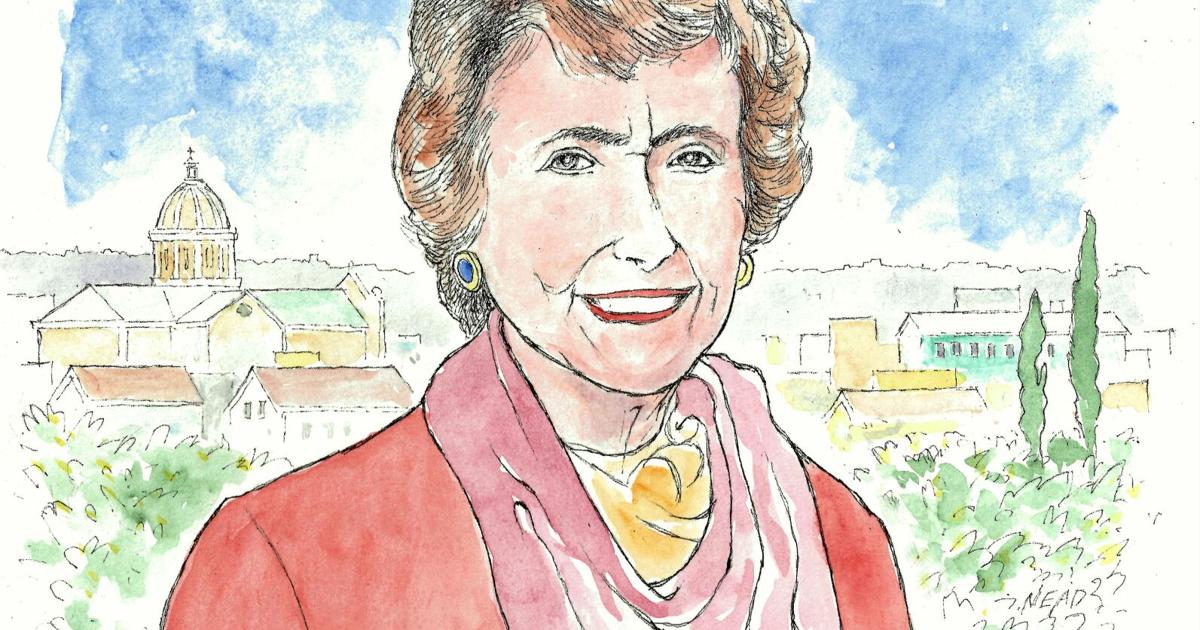When Lindy Boggs was appointed as U.S. Ambassador to the Vatican in 1997, her daughter Cokie Roberts, a star journalist for ABC television, teased her by saying, “Mom, you are going to have the toughest job in government — representing Bill Clinton to the pope.”
Fortunately, Boggs had experience with tough jobs.
Baptized in 1916 as Marie Corinne Morrison Claiborne, she grew up near the Pointe Coupee Parish town of New Roads. According to The Times-Picayune, a household nurse, thinking she looked like her father, Roland Claiborne, dubbed her “Rolindy.” The nickname became Lindy and stuck for life.
Boggs got her schooling at St. Joseph’s Academy. She graduated at 15 as valedictorian before heading to New Orleans for enrollment at Newcomb College.
Her time at St. Joseph would influence her in two important ways. In her 1994 book “Washington Through A Purple Veil: Memoirs of a Southern Woman” (Harcourt Brace) Boggs wrote that from a childhood of seeing nuns at work she learned about the capability of women. They did the chores — such as driving trucks, carpentry, management and working in the fields. And, she became a devout Catholic.
Marriage and tragedy
In 1938, Lindy married an aspiring young politician named Hale Boggs. The couple settled in New Orleans, where a law partner who would be a future mayor, deLesseps Morrison, was also a native of Pointe Coupee.
Hale Boggs was elected to Congress in 1940 but was defeated two years later. He returned to Congress in 1947, beginning a streak that lasted until his death in 1972. Wife Lindy was known as a sweet, Southern charmer, but political insiders knew she was also a tough strategist who worked alongside her husband in many of his battles.
Hale Boggs, a Democrat, rose through the ranks and to the position of House Majority Leader (the same job currently held by Republican Steve Scalise). He was on a fast track to become Speaker of the House, but then there was the tragedy. To this day, it is still not known exactly what happened to the small plane he and Alaska Congressman Nick Begich were in as they flew over Begich’s home state.
In 1974, Lindy Boggs was elected to her husband’s seat. Like the nuns in their day, she was doing a job that was usually held by men. She went on to serve seven more terms, was respected and never seemed to have enemies. She retired in 1991, but was a natural when the State Department was looking for someone to send to Rome as ambassador to the Holy See.
News of the world in Vatican City
In its own way, Vatican City had strategic importance. Reflecting on her tenure (1997-2001), Boggs would recall that the job was an important listening post. The news and gossip of the world would reverberate along the old streets.
There were also her own stories to tell, some about activities carried out in secret.
For example, military historians would never know about her role in bringing together the world’s smallest army, the Vatican’s Swiss Guard, with the world’s most powerful sea force, the U.S. Navy.
Boggs had become friendly with some of the young men, best known for their colorful 15th-century ceremonial uniforms, whose job was to protect the pope. One of the Guard’s leaders told her that members wanted to visit a United States aircraft carrier. Working with the Defense Department, a group from the pope’s army was bused to the port in Naples, where a carrier was docked.
Apparently, Vatican troops were wowed by the experience. A few days later, Boggs was asked if she could arrange for another group from the Guard to visit the ship. That request, too, was accommodated.
There was a wartime mission as well. During her years on the job, the war in Bosnia was raging, causing a serious food shortage. Arrangements were made to ship leftover supplies from a carrier. According to Navy rules, the food could not be served on board because its expiration date had passed, but it was nevertheless safe to eat. Without any public announcement, the requestioned items were trucked to the war zone, where empty plates would be filled.
Cokie Roberts and her husband, Steve, a journalist who co-authored a column with Cokie, visited Boggs in Rome. He would recall that one evening, the three were taken for a private audience with Pope John Paul II. They were escorted to a chapel where they just sat quietly. But then, after a while, a figure suddenly arose from near the foot of the altar. It was the pope, who had been praying while positioned on the floor. No global leader had ever made such an entrance.
I remember the day John Paul II died, April 2, 2005. I was in the French Quarter at the annual Tennessee Williams/New Orleans Literary Festival. Cokie and Steve Roberts had gone there to join Boggs on a panel, but Cokie Roberts would be sent by ABC to Rome the night before with the news of the Pope’s imminent death. Boggs was besieged by the press wanting her comments.
Later that afternoon, the bells of the cathedral, which had already been draped in black, began a somber ringing.
In 2013, Lindy Boggs passed away.
Lindy and the pope, who visited New Orleans in 1987, had maintained a cordial relationship. Through all their conversations, I hope he appreciated the long-range impact of the nuns from New Roads.
Contact Errol Laborde at elabordenola@gmail.com
